
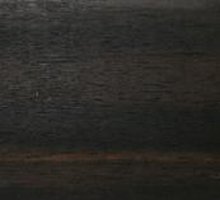 Gabon Ebony - Diospyros crassiflora 1030 [ph] |
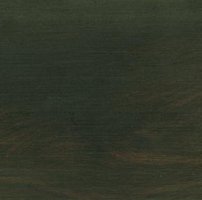 Ebony (Indian) - Diospyros ebenum |
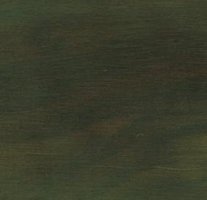 Macassar Ebony - Diospyros celebica, Diospyrus macassar 1090 [ph] |
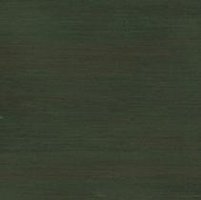 African Blackwood (Mpingo) - Dalbergia melanoxylon 1250 [ph] |
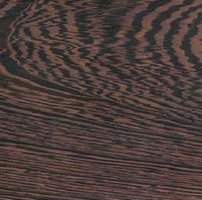 Wenge - Millettia laurentii 865 [ph] |
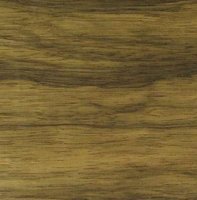 Black Limba (Korina) - Terminalia superba White and Black Limba come from the same tree. 545 [ph] |
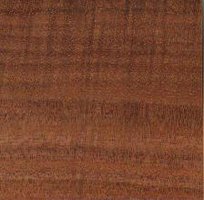 Tasmanian (aka Australian) Blackwood - Acacia melanoxylon 640 [ph] |
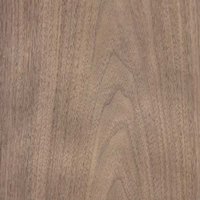 Black Walnut - Jaglans nigra 641 [ph] |
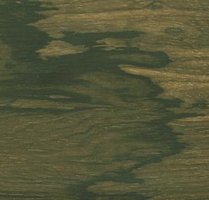 Ziricote - Cordia dodecandra 897 [ph] |
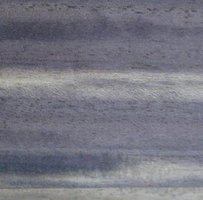 Blue Mahoe - Hibiscus elatus 753 [ph] |
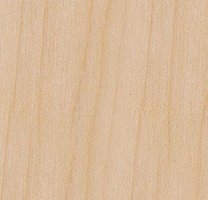 Maple (Eastern Hard, Sugar) - Acer saccharinum, Acer saccharum 705 [ph] |
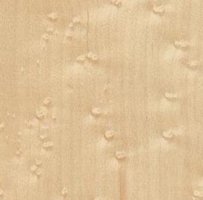 Bird's Eye Maple [ph] |
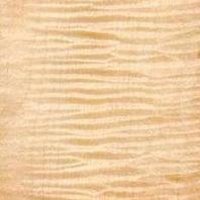 Curly Maple [ph] |
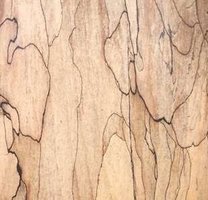 Spalted Maple [ph] |
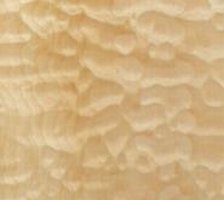 Quilted Maple - Acer macrophyllem 545 [ph] |
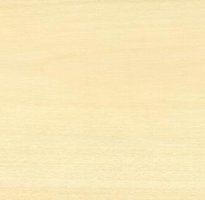 Holly - Ilex spp., Ilex opaca [ph] |
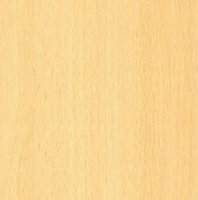 Light Beech - Fagus sylvatica 689 [ph] |
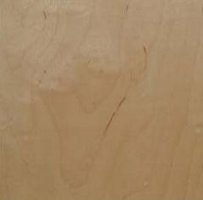 Baltic Birch Plywood European Silver Birch - Betula pendula 657 American Birch - Betula alleghaniensis 689 [ph] |
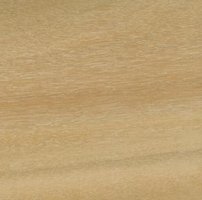 Gum (Sugar, Sweet, or Red) Australia - Liquidambar styraciflua 561 [ph] |
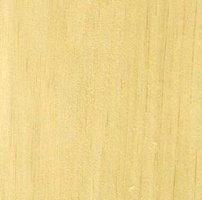 Queensland Silver Ash - Australia American Ash - Fraxinus americana 689 [ph] |
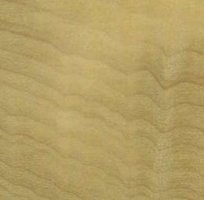 Magnolia (Japanese "Ho" wood) [ph] |
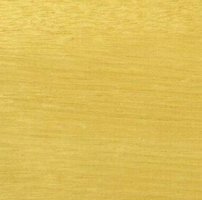 Yellowheart (Pau Amarello) - Euxylophora paraensis [ph] |
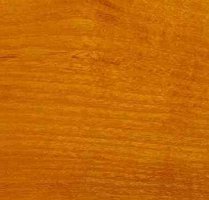 Osage Orange - Maclura pomifera 897 [ph] |
As beautiful as these woods are, and as tempting as it may be to display puzzles made from them, most if not all of them will fade to brown after prolonged exposure to daylight. So if you want the woods to retain their rich colors, you must store puzzles made from these woods away from light! In particular, Redheart (Chakte Kok), Padauk, Canarywood, and Jarrah all lose their red coloring. Bloodwood holds its color the best of the red-colored woods.
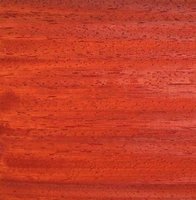 Padauk (Amboyna) - Pterocarpus soyauxii, Pterocarpus indicus 737 [ph] |
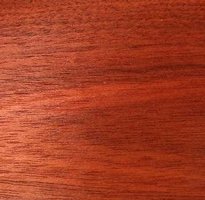 Bloodwood - Brosimum paraense 641 [ph] |
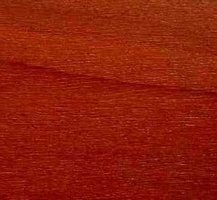 Jarrah - Eucalyptus marginata, of western Australia. 865 [ph] |
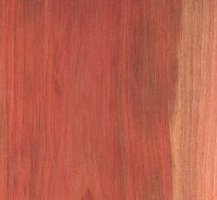 Redheart (Chakte Kok) - Simira (or Sickingia) salvadorensis, Cosmocalyx spectabilis, Simira spp., Erythroxylon spp. PH says Redheart and Chakte Kok are not the same 641 [ph] |
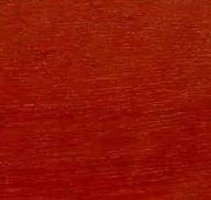 Massaranduba (Brazilian Redwood, Bulletwood, Beefwood) - Manilkara huberi, Manilkara bidentata, Manilkara Elata 1057 [ph] |
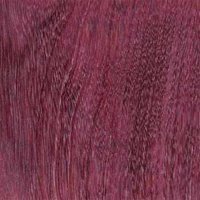 Purpleheart (Amaranth) - Peltogyne sp. 833 [ph] |
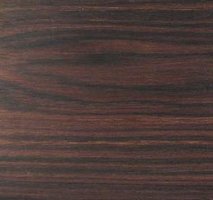 Kingwood - Dalbergia Cearensis [ph] |
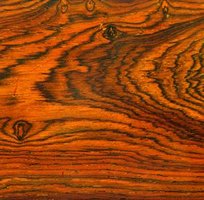 Cocobolo (Palisander) - Dalbergia retusa 1105 [ph] |
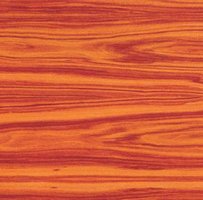 Tulipwood (Bois de Rose) - Dalbergia frutenscens, Dalbergia decipularis 961 [ph] |
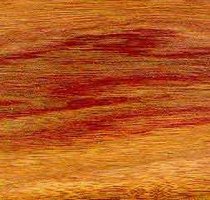 Canarywood - Centrolobium microchaete 961 [ph] |
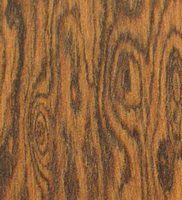 Bocote - Cordia elaeagnoides 641 [ph] |
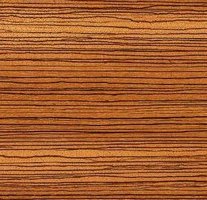 Zebrawood (Zebrano) - Microberlinia brazzavillensis 849 [ph] |
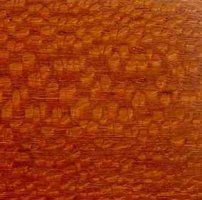 Leopardwood - Panopsis rubellens, Flindersia maculosa 960 [ph] |
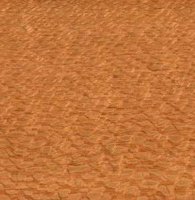 Lacewood - Roupala brasiliensis 529 [ph] |
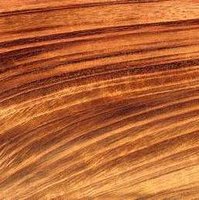 Goncalo Alves (Tigerwood, Brazilian Koa) - Astronium fraxinifolium 993 [ph] |
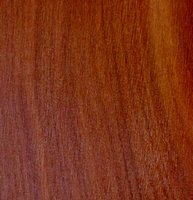 Pau Ferro - Machaerium scleroxylon Morado [ph], Bolivian Rosewood, Santos Rosewood [ph] 849 |
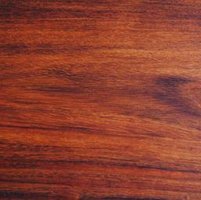 Granadillo (Mexican Rosewood) - Dalbergia Granadillo, Platymiscium pinnatum, Platymiscium ulei, Coyote - Platymiscium polystachyum 1025 [ph] |
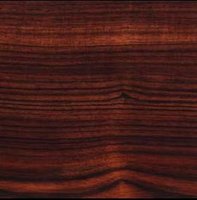 Rosewood ( Bolivian - Machaerium schleroxylon, Brazilian - Dalbergia nigra, Honduran - Dalbergia Stevensonii, Indian, Madagascar - Dalbergia greveana 561 ) |
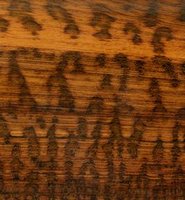 Snakewood (Letterwood) - Piratinera guianensis, Marmaroxylon racemosum 1025 [ph] |
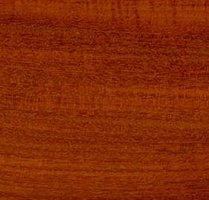 Mahogany (African - Khaya ivorensis, Cuban, Honduran - Swietenia macrophylla) |
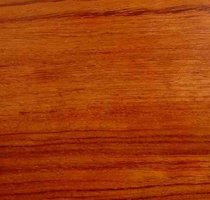 Bubinga - Guibourtia demeusei, Guibourtia tessmannii 929 |
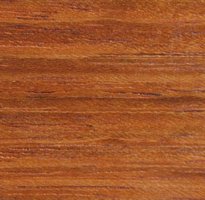 Jatoba (Brazilian Cherry, South American Locust) - Hymenaea courbaril 913 [ph] |
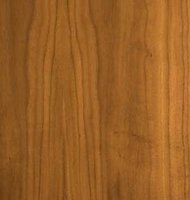 Walnut (American) |
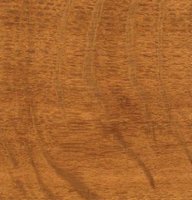 English Brown Oak - Quercus petraea, Quercus robur 689 [ph] |
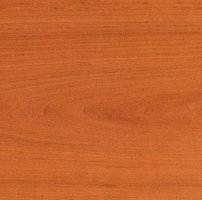 Cherry (Black) - Prunus serotina (Black - Prunus serotina, Red - Prunus pennsylvanica, Wild - Prunus avium) 577 [ph] |
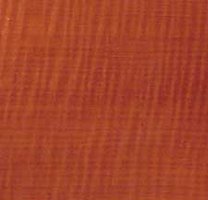 Makore (African Cherry) - Tieghemella spp. |
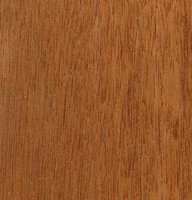 Meranti |
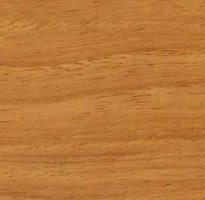 Narra - Pterocarpus indicus 641 [ph] |
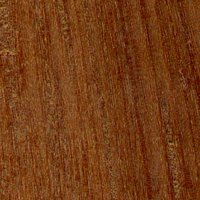 Ipe - Tabebuia guayacan Ipe is grey to brown in color with almost no grain pattern and is more than twice as strong as oak. |
As far as I know, there is no truly green-colored hardwood. However, you can usually find gray-green tinged samples of the woods listed here.
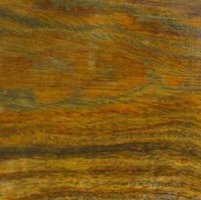 Lignum Vitae (Guaiacum wood) - Guaiacum officinale 1266, 1301 [ph] |
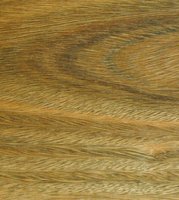 Vera - Bulnesia arborea Same family as Lignum Vitae but diff. genus. Gets more green over time! [ph] |
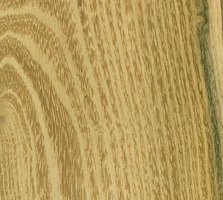 Robinia (Black Locust, False Acacia) - Robinia pseudoacacia (Fabaceae) (See Oskar's 2-piece packing from Puzzlewood.de.) |
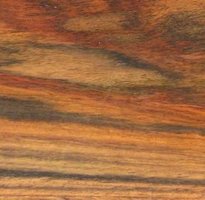 East Indian Rosewood - Dalbergia Latifolia 849 [ph] |
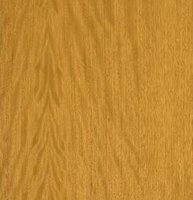 Avodire, African - Turraenanthus africanus [ph] |
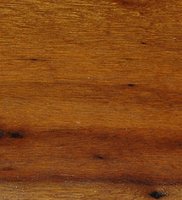 Greenheart (Sipiroe, sipiri, bebeeru, bibiru) - Ocotea radiaei, Ocotea Rodial, Chlorocardium rodiei Dense, indigenous to Guyana and Venezuela. Heartwood dark black to olive green. Extremely durable, used as pilings. 1030 [ph] [more] |
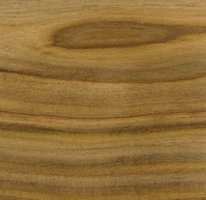 Sumac (Staghorn) - Rhus typhina, see also Smoothbark - Rhus glabra [ph] [wiki] |
These woods are inferior choices as puzzle materials, for various reasons - either they are unstable, or they have a rough surface texture, or they are difficult to glue. Monkey Pod has to be the worst - there has been a flood of cheap puzzles made from this wood. Unfortunately, while Monkey Pod can be nicely finished, these cheap puzzles are not nicely finished and usually warp, which can be disastrous for a packing, assembly, or interlocking puzzle. Teak is a nice wood for many purposes, but it is difficult to glue and I don't see many fine puzzles made using Teak.
Likewise, the other woods here can be nicely finished, but often they're not - and I don't like getting splinters when I play with a puzzle. Your experiences may vary.
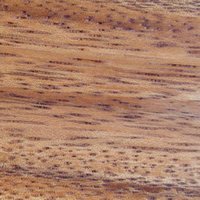 Monkey Pod (Rain Tree)- Samanea saman |
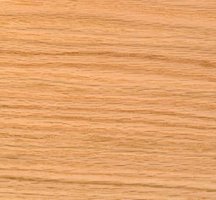 Red Oak - Quercus rubra extremely porous 689 [ph] |
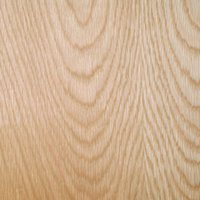 White Oak - Quercus alba among least porous 750 [ph] |
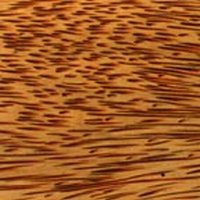 Red Palm |
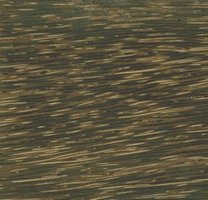 Black Palm |
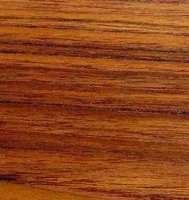 Teak - Tectona grandis 641 [ph] |